|
FAMILIES
|
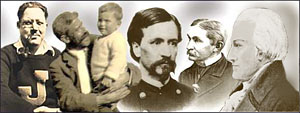
|
MY FAMILY:
Mother left father when I was six weeks old, so I never knew him. By the time I was old enough to look
for him, he'd been dead many years. With little to work with, other than an obituary of his mother,
I set off to try to understand this man whose blood I carried. Most of my genealogical research has
been spent discovering father through his family.
|
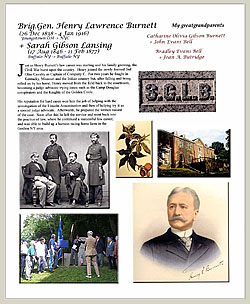
|
MULTIMEDIA FAMILY FORMS (MMFFs):
A Multimedia Family Form provides a pictoral way of bringing out the individuality of family connections.
It includes the normal names and dates, as well as a biographical summary, but its strength is in the
pictoral reminders of aspects of the life of a particular couple. When you're dealing with many hundreds of
names, it helps to pull out the ones that you want to remember.
|

|
HENRY LIVINGSTON'S ANCESTORS:
Much can be learned about someone by examining their family and friends. My research into
5th great grandfather, Henry Livingston, Jr., emphasized the large extended family living in New York
in the 18th and 19th centuries.
|
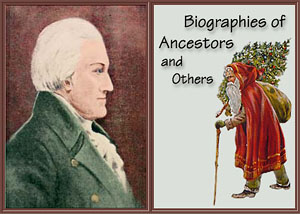
|
BIOGRAPHIES OF CONNECTONS OF HENRY LIVINGSTON:
Much can be learned about someone by examining their family and friends. My research into
5th great grandfather, Henry Livingston, Jr., emphasized the large extended family living in New York
in the 18th and 19th centuries.
More Connections of Henry
|
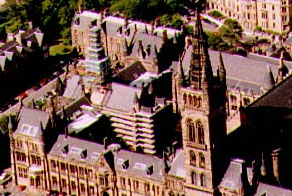
|
MY ANDERSON FAMILY:
James Anderson was educated at Edinburgh Scotland, under the care of Principal Stirling, of Glasgow.
His original aim was to be a pastor in Virginia, but the opportunities for Presbyterian congregations in
a Church of England community were too few, so he moved on to Delaware, and then New York City. His
conservative religious views put him in conflict with the Livingstons, as well as with the young and
charismatic Jonathan Edwards, so Anderson moved on again to the congregation where he would finally settle, Donagal PA.
|
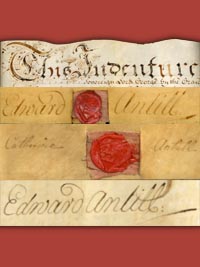
|
MY ANTILL FAMILY:
Edward Antill was a lawyer and merchant who died at the age of 45, leaving a single son, also named Edward,
in the care of the pirate Giles Shelley, whom the elder Antill had defended and saved from hanging. With
inheritance from both his father and his guardian, the younger Antill married a daughter of Governor Lewis
Morris. The Antill family was well educated and active in scientific associations. Colonel Edward Antill,
the third generation, was trained as an engineer and sent to America's new Congress to describe the
death of General Montgomery before the walls of Quebec City.
|
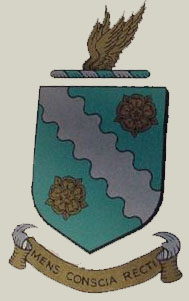
|
MY BEEKMAN FAMILY:
Wilhelm Beekman came from an educated German family in Cologne, one grandfather, Rev. Gerardus Beekman, having been
rewarded by King James I for his translation of the bible. His other grandfather, Rev. William Baudertius, was
another well-known theologian. Wilhelm Beekman came to New Amsterdam with Peter Stuyvesant, and was
appointed Governor of a Delaware colony, and deputy mayor of New York City in 1680.
|
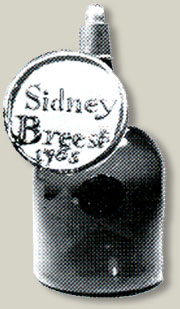
|
MY BREESE FAMILY:
Our immigrant ancestor, Sidney Breese (1709-1767), was the purser of a Navy ship before he came to America and started one of the first
department stores in New York City. His wife, Elizabeth Penkethman (1710-1779), was the daughter of a Navy captain and
a "natural" daughter of Lord Camden. Many of their descendants continued the Breese tradition of Naval
careers.
The current opinion is that Sidney Breese is not connected with the New York Breese branch descending
from John, Henry and Cornelius Breese.
|
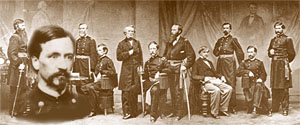
|
MY BURNETT FAMILY:
Following the Revolutionary War, Samuel Burnett moved his family from New Jersey to western Pennsylvania, on lands he had been given for
his military service. As was often the case, Burnett moved as part of a small, religious community. Although
he built a mill there, he eventually pulled up stakes again and moved his family across the border into Ohio,
and it was there he settled.
His son Henry didn't have his educational advantages, but still prospered
in the surveying and real estate business, relying on a method of computation which he invented for himself.
Staunchly anti-slavery, Henry's house was one of the permanent stops on the underground railroad moving
escaped slaves north.
Colonel Henry Lawrence Burnett, Henry's son, ran away from home to earn his education as a lawyer. But when
the Civil War began, he joined the Ohio Cavalry,
transferring to the judge advocate corps after being rolled on by his horse. Upon
the assassination of President Lincoln, he was called to Washington by Secretary Stanton. Henry managed the investigation for Stanton, and served as one of the special
judge advocates during the trial. Afterwards, he prepared the materials for the Library of Congress. He was breveted
as Brigadier General at the end of the Civil War.
|
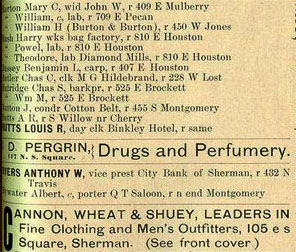
|
MY BUTRIDGE FAMILY:
The Butridge family of Sherman Texas descends from Butteridge/Butrage, who came to Virginia from
England. The Thomas Graves connection no longer exists, based on DNA testing.
|
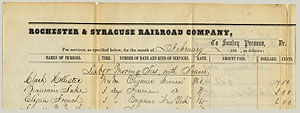

|
MY GIBSON FAMILY:
John Gibson was of Irish descent and, most likely, served under the man who became his
father-in-law, Colonel Henry Bicker. Following the war, John and Mary moved their family to Ballston Spa, NY,
where he worked as a lawyer and, for a short time before his death, served in the New York legislature
beside his son-in-law, Colonel Samuel Young.
Not wanting to follow his father into the law, Henry B. Gibson ran away from home to work in the
store of Judge Cooper, the father of James Fenimore Cooper. A later position with Watts Sherman led
to his marrying Sherman's daughter, Sarah. Over his lifetime, Gibson became Cashier of the Ontario Bank,
president of the Ontario Canal Company, and president of the Auburn and Rochester Railroad and the
Rochester and Syracuse Railroad. After the latter was merged with others to form the New York Central,
Gibson served on the Board of Directors for a year. Gibson Street in Canandaigua and Port Gibson NY were
both named for him.
|
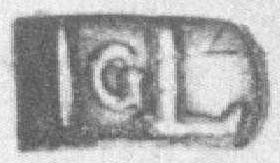
|
MY LANSING FAMILY:
The Lansing family is pure New York Dutch, descending from Gerrit Lansing, their immigrant ancestor.
Gerrit's son Jacob was a silversmith in Albany, passing on his art to a son and grandson. The similarity
of names in this family line makes genealogy a rather hellish endeavor. While this can be seen with the
profusion of Jacobs and Gerrits, it reaches its peak with Barent Bleecker Lansing naming two of his sons
Henry Lansing, distinguished by only a a middle name. Since both went into the military and came out of
the Civil War brevetted as Brigadier Generals, the confusion stays around quite a while. Henry Livingston
Lansing followed his father-in-law, Henry B. Gibson, into the banking field, and then became Treasurer of
the Buffalo and Erie Railroad. Henry Seymour Lansing spent many years in Europe in the banking industry,
returning and becoming Auditor General of the 1876 Centennial Exhibition in Philadelphia.
|
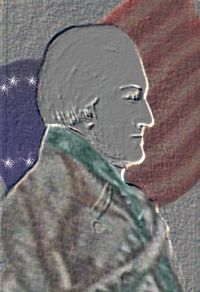
|
MY LIVINGSTON FAMILY:
Robert Livingston came to America from Scotland, following a dream of his father's that his father's
death prevented him from completing. Descending from a line of educated ministers, Robert made his
fortune by marrying the widow of Van Rennselaer, Alida Schuyler.
|
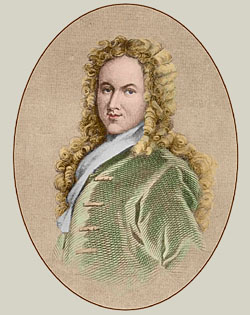
|
MY MORRIS FAMILY:
Lewis Morris (1671-1746) was Chief Justice of the American Colonies in 1720, and became Governor of New Jersey
in 1738. It was his grandson, Lewis Morris, who signed the Declaration of Independence. Governor Morris was
a poet, and co-wrote the first play produced in America.
|
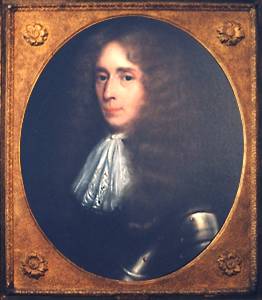
|
MY SCHUYLER FAMILY:
Philip Schuyler, the immigrant ancestor of the Schuyler family, arrived in America and married
the daughter of the director of the Rensselaerswyck colony. He was appointed Vice-director of Fort Orange,
an area which became Albany. The family which descended from Philip and Margaretta became one of the
most important Colonial families.
|
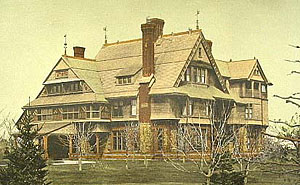
|
MY SHERMAN FAMILY:
The Butridge family of Sherman Texas descends from Butteridge/Butrage, who came to Virginia from
England. The Thomas Graves connection no longer exists, based on DNA testing.
|

|
MY WELLES FAMILY:
One of the two major branches of the Welles surname in Connecticut, Rev. Dr. Noah Welles settled
in Stamford after graduating from Yale University, where he developed a friendship with
Governor William Livingston.
A Yale tutor, Dr. Welles
was described by Yale President Timothy Dwight:
"Dr. Welles was early distinguished for his talents. His imagination was vivid and poetical; his intellect vigorous, and his learning extensive. His manners, at the same time, were an unusual happy compound of politeness and dignity. ... He was an excellent minister of the Gospel, exemplary in all the virtues of the Christian life, an able preacher, a wise ruler of the church, and an eminently discreet manager of its important concerns."
Rev. Welles was a fervent revolutionary, and died of a fever contracted while visiting prison ships
during the Revolutionary War.
|

|
MY WOOLSEY FAMILY:
Reverend Benjamin Woolsey graduated Yale in 1707, and settled on Long Island on a piece of
property known as Dosoris, which came as his wife's dower. His descendants concentrated in
the church and military, his great grandson, Theodore Dwight Woolsey, becoming President of Yale
in 1846.
|
|
INDIVIDUALS OF OTHER SURNAMES
|
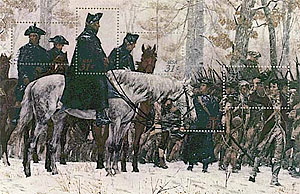
|
COLONEL HENRY BICKER:
Colonel Henry Bicker commanded the Second Pennsylvania Continental Line during the terrible winter of
1888. His Orderly Book gives a glimpse into the life of the regiment.
|
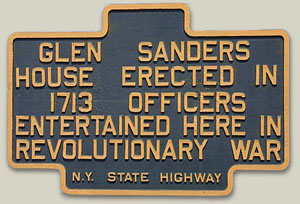
|
SANDER (ALEXANDER) LEENDERTSE GLEN:
Alexander Glen was one of the original "Fifteen Proprietors" of Schenectady. Born in Scotland in 1600,
he was well educated and wealthy, coming to America as an agent of the Dutch West India Company.
|
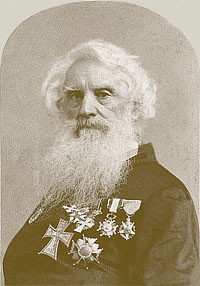
|
SAMUEL FINLEY BREESE MORSE:
Famous as both a portrait painter and the inventor of Morse Code, Samuel Finley Breese Morse was a
descendant of the Breese family and purchased Locust Grove, the estate of Henry Livingston, Jr., the
father of Morse's aunt Catharine Livingston, and the great grandfather of Morse's second wife, Sarah
Elizabeth Griswold.
|
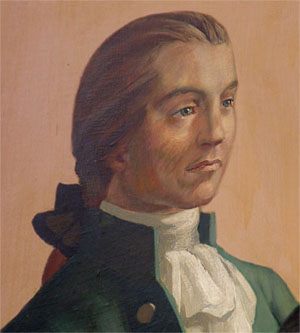
|
BRIG. GEN. PHILIP VAN CORTLANDT:
The son of Lt. Governor Philip Van Cortlandt and Joanna Livingston, Philip Van Cortlandt was
mustered out of the Revolutionary Army with the rank of Brigadier General for his service at Yorktown
under General Lafayette. Like his father, he became active in New York politics and was a member of
the convention that voted for the Federal Constitution in 1788.
|
AND CHECK OUT THE HISTORY MAP
|

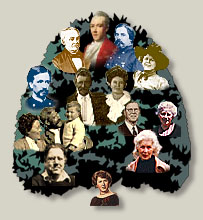



























![]() Copyright © 2007, Mary S. Van Deusen
Copyright © 2007, Mary S. Van Deusen